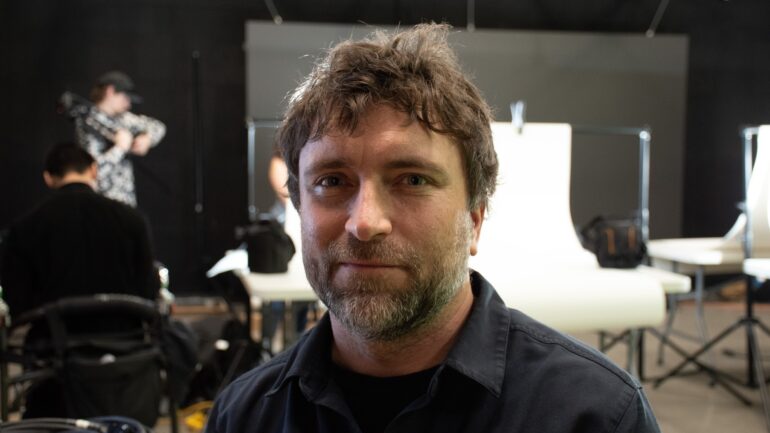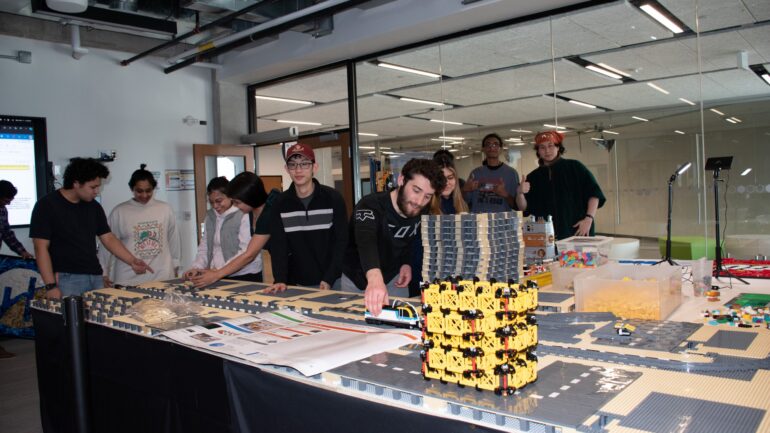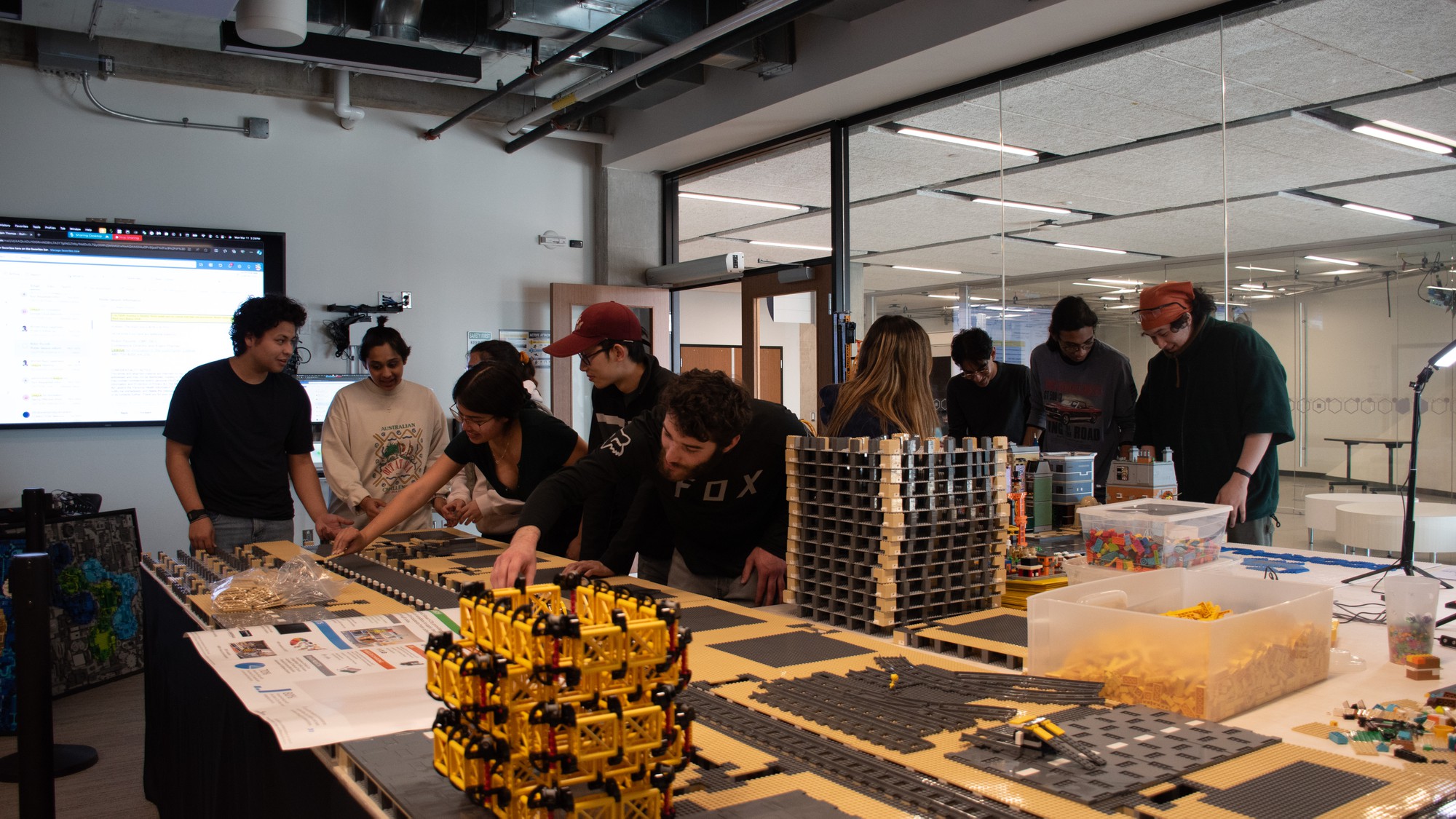Another part of the Lego Smart City project is underway, this time, digitally and on paper.
Located in Room 307 of the Barrett Centre, Adam Thomas, a coding professor at Humber, hosted a hackathon where students filmed videos of themselves and their group assembling a Lego figurine.
Thomas said a hackathon is when a project that takes a couple of weeks is compressed into an intense six-hour period. In this case, videos for social media, such as Instagram and TikTok, are being filmed.
Thomas said they are launching social media channels related to BrickMMO, the name of the project.
“We thought it’d be a good opportunity for students to take the videos we’ve created and attempt to recreate them,” Thomas said.
“It kind of gives them a close-to industry experience because, in Humber when you’re doing assignments you’re often creating things from start to finish, but in the industry, you’re given more direction and templates to work with,” he said.
Thomas said the Lego figurines students are building and filming will not be featured in the smart city but will be just used for social media.
C.J. Veloso, a partial load instructor in the Multimedia Design and Development program and the Graphic Design program, was at the hackathon to oversee his students film the videos for social media.
“Adam Thomas reached out to me a couple of weeks prior and mentioned that there is a Lego hackathon going on and he’d love for my motion design students to partake in the activity,” Veloso said.
“I feel it would be a great way to do some hands-on learning, test their video skills out and apply some motion graphics to it, as well,” he said.

C.J. Veloso, a partial load instructor in the Multimedia Design and Development and Graphic Design programs. Veloso was overseeing the Hack-a-Thon on March 8. Photo credit: Krishna Bhagnathsingh
“The intention is to assist BrickMMO, to create some short-form content to social media, like TikTok, Instagram [reels], YouTube shorts,” Veloso said.
Another day of the hackathon was held on March 11, when students were in Room 306 of the Barrett Centre and were given time to sketch a control panel.
Evan Huang, a student in the Industrial Design program at Humber, was at the hackathon on March 11.
“The reason I came is, mostly, because I like Lego,” Huang said. “The idea of sketching out a control panel to make a Lego city function sounds like a cool idea.”

Adam Thomas, a coding professor at Humber College. Thomas hosted the hackathon on March 8 and March 11. Photo credit: Krishna Bhagnathsingh
Huang said he would like to get more experience in sketching to see which designs are appropriate and work well.
“I grew up with Lego so building stuff just seems to come naturally for me,” Huang said.
Ariadna Villegas, another student in the Industrial Design program at Humber, was also at the event on March 11.
“We haven’t worked with Lego throughout the program so it’s a first time for us,” Villegas said. “It’s like a special occasion, so we’re really excited about it.”
Villegas said she hopes this event helps her to learn how the system works.
“Personally, I haven’t worked with this kind of Lego because they’re motorized, so I didn’t think it was possible,” Villegas said.
“Being a part of that and learning how it works is just enough for me and maybe for my portfolio,” she said.

Students building and play with Lego bricks at the hack-a-thon. This part of the hackathon was hosted on March 11 at the Barrett Centre. Photo credit: Julia Vellucci
Ahmed Sagarwala, the associate dean of Interaction Design at Humber, attended the hackathon on March 11 and said seeing students from different programs collaborating is the project’s goal.
“Having this happen here and bringing in this talent to support the project is quite exciting,” Sagarwala said.
“I guess if we just use the skillsets of the web development program, which is the program hosting this project, then we wouldn’t have the understanding or skills of how to build a control panel from an industrial design point-of-view,” he said.
Sagarwala said when different skills are represented at Humber, those skills are then better represented when put together.

Ahmed Sagarwala, the associate dean of Interaction Design at Humber, holding a poster. Sagarwala was at the hack-a-thon on March 11 to help oversee it. Photo credit: Julia Vellucci
“Every time we hold a session, you’ll find that students want to stay around to continue their learning, and I’d say that’s what is really exciting about the way this platform enhances the learning experience,” Sagarwala said.
He said when you see the code come to life in the Lego City, the power of code is better understood, which is why he likes this project.
However, Sagarwala said he would rather not have an end date for this project and instead could layering onto the project.
“The more we layer, the more we will replicate realism and if we’re trying to make a decision around an urban planning service standpoint, we could do it here before we actually do it outside to see what the implementation would look like,” he said.

